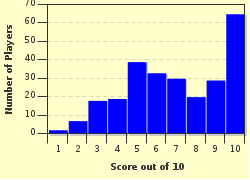Quiz Answer Key and Fun Facts
1. Which of the following is the closest English translation of the Sanskrit word "Ayurveda"?
2. Who is traditionally regarded as the founder of Ayurveda?
3. Which of the following is an ancient Sanskrit spiritual text containing some of the earliest written references to the theory and practice of Ayurveda?
4. Ayurveda recognises five essential elements of nature. Air, earth, fire and water are four of them; which is the fifth element?
5. Each of the five essential Ayurvedic elements can be paired up with another to form one of three "biological humours", or doshas, that affect all aspects of the human mind and body. Which of the following is NOT one of the three doshas?
6. Which of these is the most common element used in the Ayurvedic medical practise of Shirodhara?
7. Which of the following parts of the body would be the focus of a Shirobhyanga massage?
8. If you were suffering from arthritis, low sperm count, insomnia or digestive problems, Ayurvedic medicine may recommend taking a herbal remedy containing Ashwagandha. What of the following is NOT another name for Ashwagandha?
9. The herb andrographis paniculata, popular in Ayurvedic medicine, is sometimes known as "maha-tita", which translates into English as what?
10. What Ayurvedic system originated as a spiritual practice in the Hindu religion, but has become popular in the West as a form of physical exercise and relaxation?
Source: Author
stedman
This quiz was reviewed by FunTrivia editor
crisw before going online.
Any errors found in FunTrivia content are routinely corrected through our feedback system.


